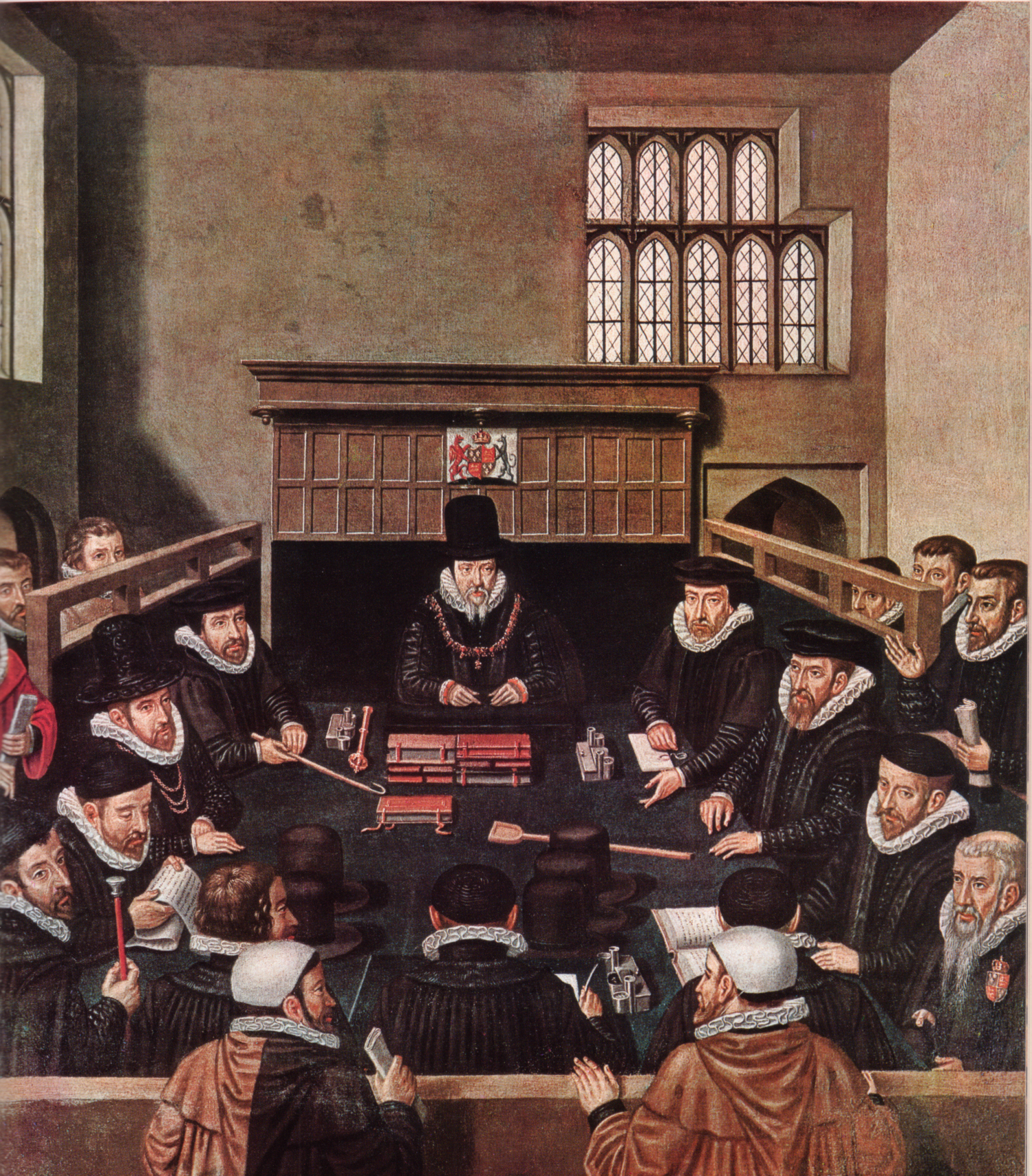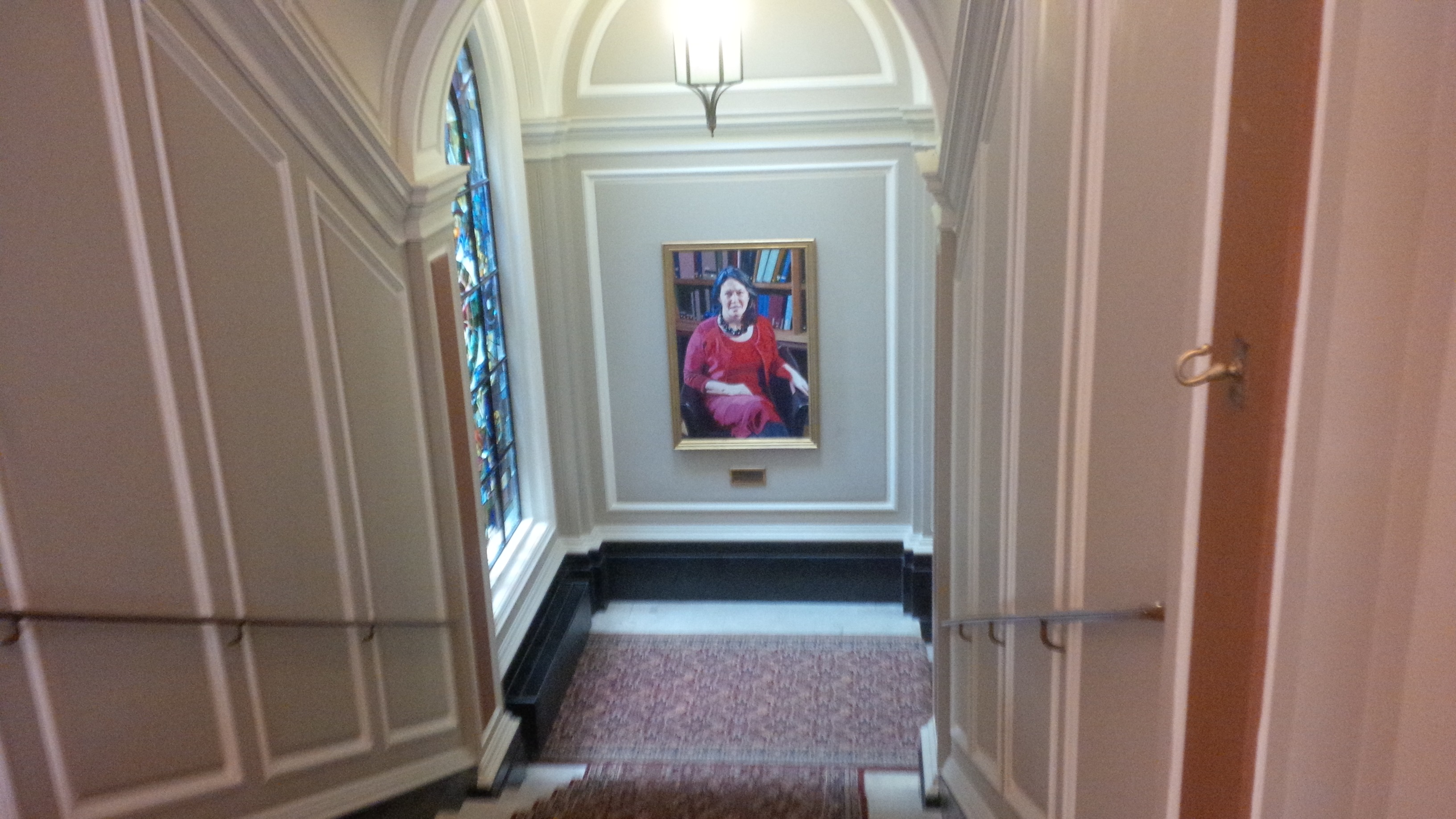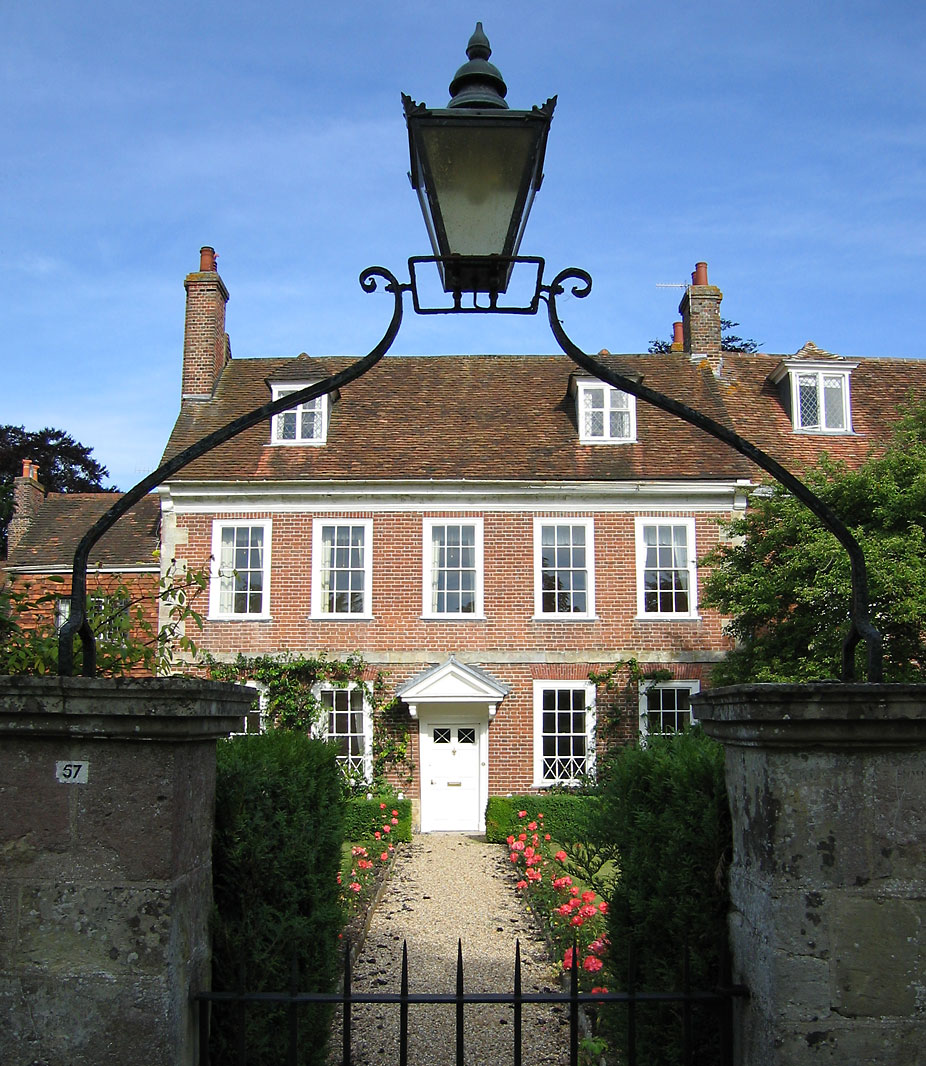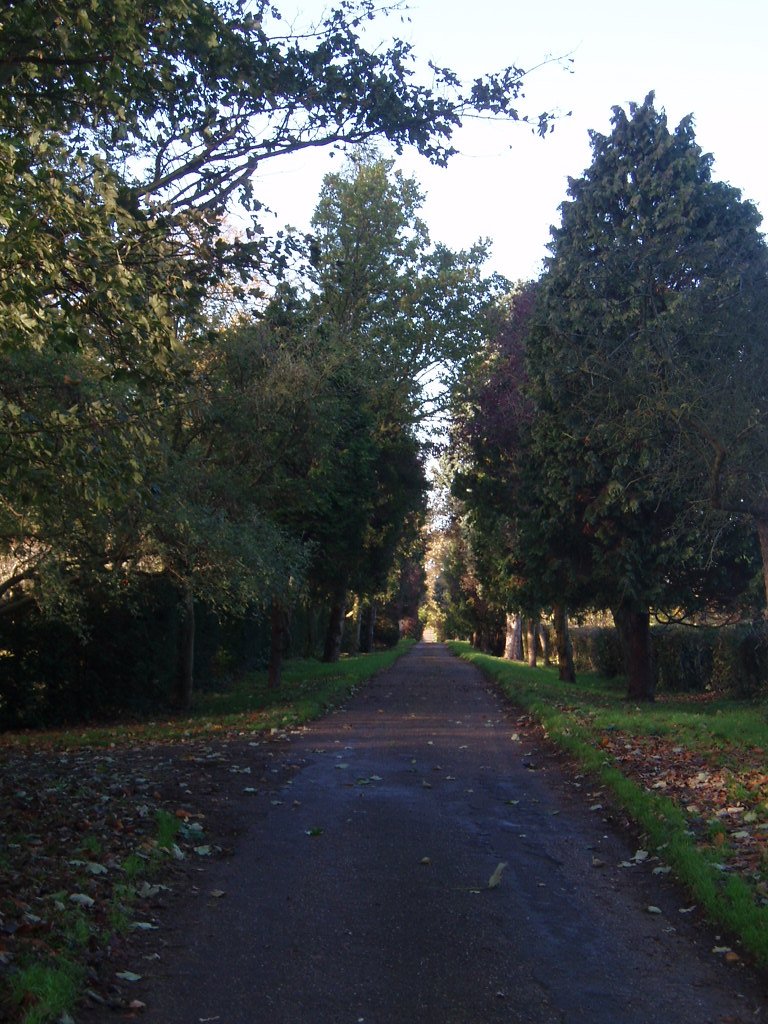|
Glevering Hall
Glevering Hall is a historic house and estate approximately northwest of Wickham Market, in the parish of Hacheston, Suffolk, England. It was possessed at one time by the Abbey of Leiston. The present house was built in 1794 by Chaloner Arcedeckne, MP. Glevering Hall became a Grade II* listed building on 25 October 1951. History The manor of Glevering, or Glavering, appears to have been a hamlet to Hacheston. In the time of William the Conqueror, it was in the possession of Herveus Bituricensis, though William de Malet also had an estate at Glevering. Before 1313 Gilbert de Peche gave it to Leiston Abbey, in Suffolk, and it remained in the abbey's possession until the dissolution of the monasteries. Henry VIII granted the estate to Charles Brandon, Duke of Suffolk. From his heirs, it became the dower of Anne of Cleves. After Thomas Seckford obtained it through a grant in fee, he sold it in 1564 to John Bull of Brodshaw Hall, in Sproughton; it continued in this family for ... [...More Info...] [...Related Items...] OR: [Wikipedia] [Google] [Baidu] |
Hacheston
Hacheston is a village and a civil parish in the East Suffolk district, in the English county of Suffolk. The population of the parish at the 2011 census was 345. It is located on the B1116 road between the towns of Wickham Market and Framlingham. Hacheston has a church and a village hall. Hacheston Halt railway station was closed in 1952. Glevering Hall is a historic house and estate within the parish which was built in 1794 by Chaloner Arcedeckne, MP. Glevering Hall became a Grade II* listed building on 25 October 1951. Governance An electoral ward in the same name exists. This ward stretches north to Bruisyard with a total population taken at the 2011 Census of 1,977. Notable residents * Chaloner Arcedeckne (c. 1743–1809); MP and Jamaican landowner *Claude Hinscliff (1875–1964); suffragist. *Chinwe Chukwuogo-Roy MBE (1952-2012); visual artist. Related pages *Glevering Hall Glevering Hall is a historic house and estate approximately northwest of Wickham Market, i ... [...More Info...] [...Related Items...] OR: [Wikipedia] [Google] [Baidu] |
Thomas Seckford
Thomas Seckford Esquire (1515 – 1587) was a senior lawyer, a "man of business" at the court of Queen Elizabeth I, a landowner of the armigerous Suffolk gentry, Member of Parliament,M.K. Dale, 'Seckford (Sakford), Thomas (1515/16-87), of Gray's Inn, London', in S.T. Bindoff (ed.), ''The History of Parliament: the House of Commons 1509-1558'' (from Boydell and Brewer 1982)History of Parliament OnlineAnon, 'Seckford, Thomas I (1515 or 1516-87), of Woodbridge and Ipswich, Suff. and Clerkenwell, London', in P.W. Hasler (ed.), ''The History of Parliament: the House of Commons 1558-1603'' (from Boydell and Brewer 1981)History of Parliament Online and public benefactor of the town of Woodbridge. He was one of the Masters in Ordinary of the Court of Requests to Queen Elizabeth, 1569-1587, and was Surveyor of the Court of Wards and Liveries 1581-1587. He built mansions in Woodbridge, Ipswich and Clerkenwell, and was at different times Steward of the Liberty of Ely (St Etheldreda) in ... [...More Info...] [...Related Items...] OR: [Wikipedia] [Google] [Baidu] |
Panelling
Panelling (or paneling in the U.S.) is a millwork wall covering constructed from rigid or semi-rigid components. These are traditionally interlocking wood, but could be plastic or other materials. Panelling was developed in antiquity to make rooms in stone buildings more comfortable both by insulating the room from the stone, and reflecting radiant heat from wood fires, making heat more evenly distributed in the room. In more modern buildings, such panelling is often installed for decorative purposes. Panelling, such as wainscoting and boiserie in particular, may be extremely ornate and is particularly associated with 17th and 18th century interior design, Victorian architecture in Britain, and its international contemporaries. Wainscot panelling The term wainscot ( or ) originally applied to high quality riven oak boards. Wainscot oak came from large, slow-grown forest trees, and produced boards that were knot-free, low in tannin, light in weight, and easy to work w ... [...More Info...] [...Related Items...] OR: [Wikipedia] [Google] [Baidu] |
Adam Style
The Adam style (or Adamesque and "Style of the Brothers Adam") is an 18th-century neoclassical style of interior design and architecture, as practised by Scottish architect William Adam and his sons, of whom Robert (1728–1792) and James (1732–1794) were the most widely known. The Adam brothers advocated an integrated style for architecture and interiors, with walls, ceilings, fireplaces, furniture, fixtures, fittings and carpets all being designed by the Adams as a single uniform scheme. Commonly and mistakenly known as "Adams Style", the proper term for this style of architecture and furniture is the "Style of the Adam Brothers". The ''Adam style'' found its niche from the late 1760s in upper-class and middle-class residences in 18th-century England, Scotland, Russia (where it was introduced by Scottish architect Charles Cameron), and post- Revolutionary War United States (where it became known as Federal style and took on a variation of its own). The style was super ... [...More Info...] [...Related Items...] OR: [Wikipedia] [Google] [Baidu] |
Georgian Architecture
Georgian architecture is the name given in most English-speaking countries to the set of architectural styles current between 1714 and 1830. It is named after the first four British monarchs of the House of Hanover— George I, George II, George III, and George IV—who reigned in continuous succession from August 1714 to June 1830. The so-called great Georgian cities of the British Isles were Edinburgh, Bath, pre-independence Dublin, and London, and to a lesser extent York and Bristol. The style was revived in the late 19th century in the United States as Colonial Revival architecture and in the early 20th century in Great Britain as Neo-Georgian architecture; in both it is also called Georgian Revival architecture. In the United States the term "Georgian" is generally used to describe all buildings from the period, regardless of style; in Britain it is generally restricted to buildings that are "architectural in intention", and have stylistic characteristics that are ty ... [...More Info...] [...Related Items...] OR: [Wikipedia] [Google] [Baidu] |
Decimus Burton
Decimus Burton (30 September 1800 – 14 December 1881) was one of the foremost English architects and landscapers of the 19th century. He was the foremost Victorian architect in the Roman revival, Greek revival, Georgian neoclassical and Regency styles. He was a founding fellow and vice-president of the Royal Institute of British Architects, and from 1840 architect to the Royal Botanic Society, and an early member of the Athenaeum Club, London, whose clubhouse he designed and which the company of his father, James Burton, the pre-eminent Georgian London property developer, built. Burton's works are Hyde Park, London (including the gate or screen of Hyde Park Corner, and the Wellington Arch, and the Gates); Green Park and St James's Park; Regent's Park (including Cornwall Terrace, York Terrace, Clarence Terrace, Chester Terrace, and the villas of the Inner Circle which include his own mansion, The Holme, and the original Winfield House); the enclosure of the forecourt of ... [...More Info...] [...Related Items...] OR: [Wikipedia] [Google] [Baidu] |
Andrew Arcedeckne
Andrew Arcedeckne (8 January 1780 – 8 February 1849) was a British landowner and MP. He was the eldest son of Jamaica plantation owner Chaloner Arcedeckne of Cockfield Hall and Glevering Hall, Suffolk and educated at Eton College and Christ Church, Oxford. He succeeded his father in 1809 and made Glevering Hall his home. He was appointed High Sheriff of Suffolk for 1819–1820 and was Member of Parliament for the rotten borough of Dunwich Dunwich is a village and civil parish in Suffolk, England. It is in the Suffolk Coast and Heaths AONB around north-east of London, south of Southwold and north of Leiston, on the North Sea coast. In the Anglo-Saxon period, Dunwich was ... from 1826 to 1831. He owned two plantations in Saint Thomas Parish, Jamaica, St Thomas in the East, Jamaica, Golden Grove, Jamaica, Golden Grove and Bachelor's Hall Pen. He married his cousin Ann Harriet, the daughter of Francis Love Beckford of Basing Park. References * External links ... [...More Info...] [...Related Items...] OR: [Wikipedia] [Google] [Baidu] |
High Sheriff Of Suffolk
This is a list of Sheriffs and High Sheriffs of Suffolk. The Sheriff is the oldest secular office under the Crown and is appointed annually (in March) by the Crown. The Sheriff was originally the principal law enforcement officer in the county and presided at the Assizes and other important county meetings. Most of the responsibilities associated with the post have been transferred elsewhere or are now defunct, so that its functions are now largely ceremonial. There was a single Sheriff serving the two counties of Norfolk and Suffolk until 1576. On 1 April 1974, under the provisions of the Local Government Act 1972, the title of Sheriff of Suffolk was retitled High Sheriff of Suffolk. Sheriff Pre-17th century 17th century 18th century 19th century 20th century High Sheriff 20th century 21st century See also High Sheriff of Norfolk and Suffolk References British History Online-List of Sheriffs for Suffolk {{DEFAULTSORT:High Sheriff Of Suffolk Suffolk ... [...More Info...] [...Related Items...] OR: [Wikipedia] [Google] [Baidu] |
Driveway To Glevering Hall - Geograph
A driveway (also called ''drive'' in UK English) is a type of private road for local access to one or a small group of structures, and is owned and maintained by an individual or group. Driveways rarely have traffic lights, but some that bear heavy traffic, especially those leading to commercial businesses and parks, do. Driveways may be decorative in ways that public roads cannot, because of their lighter traffic and the willingness of owners to invest in their construction. Driveways are not resurfaced, snow blown or otherwise maintained by governments. They are generally designed to conform to the architecture of connected houses or other buildings. Some of the materials that can be used for driveways include concrete, decorative brick, cobblestone, block paving, asphalt, gravel, decomposed granite, and surrounded with grass or other ground-cover plants. Driveways are commonly used as paths to private garages, carports, or houses. On large estates, a driveway may be th ... [...More Info...] [...Related Items...] OR: [Wikipedia] [Google] [Baidu] |
Earl Of Suffolk
Earl of Suffolk is a title which has been created four times in the Peerage of England. The first creation, in tandem with the creation of the title of Earl of Norfolk, came before 1069 in favour of Ralph the Staller; but the title was forfeited by his heir, Ralph de Guader, in 1074. The second creation came in 1337 in favour of Robert de Ufford; the title became extinct on the death of his son, the second Earl, in 1382. The third creation came in 1385 in favour of Michael de la Pole. (For more information on this creation, see the Duke of Suffolk (1448 creation).) The fourth creation was in 1603 for Lord Thomas Howard, the second son of Thomas Howard, 4th Duke of Norfolk, by his second wife Margaret Audley, the daughter and eventual sole heiress of Thomas Audley, 1st Baron Audley of Walden, of Audley End in the parish of Saffron Walden in Essex. Howard was a prominent naval commander and politician and served as Earl Marshal, as Lord Chamberlain of the Household and a ... [...More Info...] [...Related Items...] OR: [Wikipedia] [Google] [Baidu] |
Theophilus Howard, 2nd Earl Of Suffolk
Theophilus Howard, 2nd Earl of Suffolk, (13 August 15843 June 1640) was an English nobleman and politician. Born at the family estate of Saffron Walden, he was the son of Thomas Howard, 1st Earl of Suffolk, by his second wife, Catherine Knyvet of Charlton, North Wiltshire, Wiltshire, Charlton, and succeeded his father as 2nd Earl of Suffolk and 2nd Baron Howard de Walden in 1626, along with some other of his father's offices, including the Lord-lieutenant, lord-lieutenancy of the counties of Lord Lieutenant of Suffolk, Suffolk, Lord Lieutenant of Cambridgeshire, Cambridge and Lord Lieutenant of Dorset, Dorset. Howard danced in ''Lord Hay's Masque'' to celebrate the marriage of James Hay, 1st Earl of Carlisle, James Hay and Honora Denny on 6 January 1607. On 9 February 1608 he performed in the masque ''The Hue and Cry After Cupid'' at Whitehall Palace as a sign of the zodiac, to celebrate the wedding of John Ramsay, 1st Earl of Holderness, John Ramsay, Viscount Haddington to El ... [...More Info...] [...Related Items...] OR: [Wikipedia] [Google] [Baidu] |
Framlingham Castle
Framlingham Castle is a castle in the market town of Framlingham in Suffolk in England. An early motte and bailey or ringwork Norman castle was built on the Framlingham site by 1148, but this was destroyed (slighted) by Henry II of England in the aftermath of the Revolt of 1173–1174. Its replacement, constructed by Roger Bigod, the Earl of Norfolk, was unusual for the time in having no central keep, but instead using a curtain wall with thirteen mural towers to defend the centre of the castle. Despite this, the castle was successfully taken by King John in 1216 after a short siege. By the end of the 13th century, Framlingham had become a luxurious home, surrounded by extensive parkland used for hunting. During the 15th and 16th centuries Framlingham was at the heart of the estates of the powerful Mowbray and Howard families. Two artificial meres were built around the castle, which was expanded in fashionable brick. With a large, wealthy household to maintain, the castle p ... [...More Info...] [...Related Items...] OR: [Wikipedia] [Google] [Baidu] |








